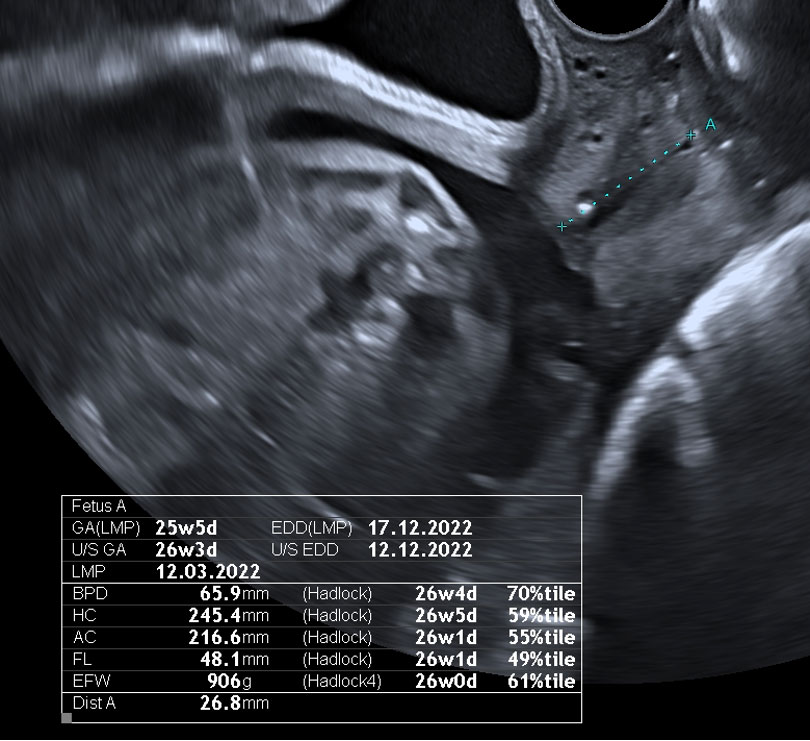Measurement of cervical length by sonography is performed for several reasons: to identify pregnancies at high risk for preterm labor, to differentiate between true and false labor in expectant mothers presenting with impending preterm labor and contractions, and to predict the success of labor induction in term pregnancies.
Measurement of cervical length is performed as part of a general or detailed ultrasound examination, and vaginal ultrasound is performed in suspicious patients. Abdominal sonographic measurements may not provide adequate or definitive information.
Measurement of cervical length should be performed in expectant mothers with contractions, at risk of preterm delivery, have a history of preterm delivery, have uterine abnormalities (malformations), or have undergone cervical surgery. It is also recommended in cases of suspected preterm labor in multiple pregnancies.
Measurement of cervical length is usually performed as part of a detailed ultrasound examination. However, in pregnancies with a history of preterm delivery, it may be necessary to perform regular/sequential examinations starting in the first trimester (from 12-16 weeks).



